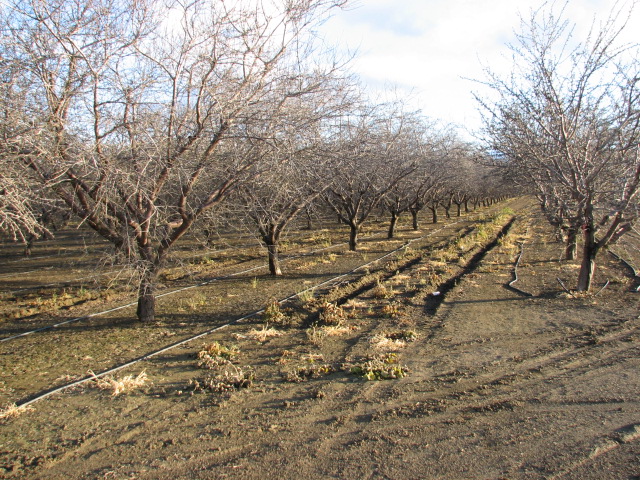Increasingly warmer temperatures in the Central Valley could pose a serious threat to California’s fruit and nut crops in the not-too-distant future, according to a new study out of UC Davis. The study finds that winter chill, which is an important factor in the productivity of tree crops, is likely to decrease by more than 50% by 2100, making the region less hospitable for crops like walnuts, peaches, plums, and cherries, unless changes in growing techniques are adopted.

If crops don’t recieve their specific chilling requirement during the winter, problems arise. Flowering time is disturbed, which could be devastating for crops such as walnuts and pistachios that depend on simultaneous male and female flowering for pollination. And if crops don’t recieve enough winter chill to go dormant in the first place, they will continue producing buds and sprouting branches, but they may not yield fruit, having dire consquences for California’s $7.8 billion fruit and nut industry, explained study author Minghua Zhang.
“We hope that people will take this study as a wake up call,” said Zhang. “Crops are going to be seriously impacted.”
Zhang and her fellow reaserchers found that in certain parts of the Central Valley, winter chill declined by nearly 30% between 1950 and 2000. They expect that the decline will be 60% by 2050 and 80% by the end of the century.
“There is a problem coming up that we need to prepare for,” said Eike Luedeling, another of the study’s authors. “So far low chilling requirement haven’t even been a breeding goal, but we are going to need a long-term strategy to cope with this.”
The researchers found that by 2000, winter chill had declined to the point that only 4% of the Central Valley was suitable for growing apples, cherries, and pears, down from 50% earlier in the 20th century. They predict that by the end of the century, the region might no longer be suitable for growing these crops as well as walnuts, pistachios, peaches, plums, and apricots. Crops like almonds and pomegranates will most likely be affected the least, as they have low winter chill requirements.
One thought on “Warmer Temperatures Threatening CA Fruit Crops?”
-
Pingback: Crops and Cars | Your Daily Thread - YDT
Comments are closed.
